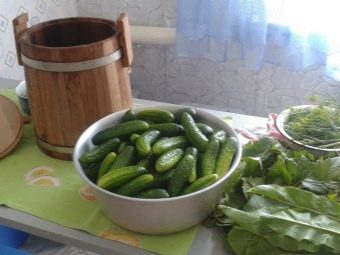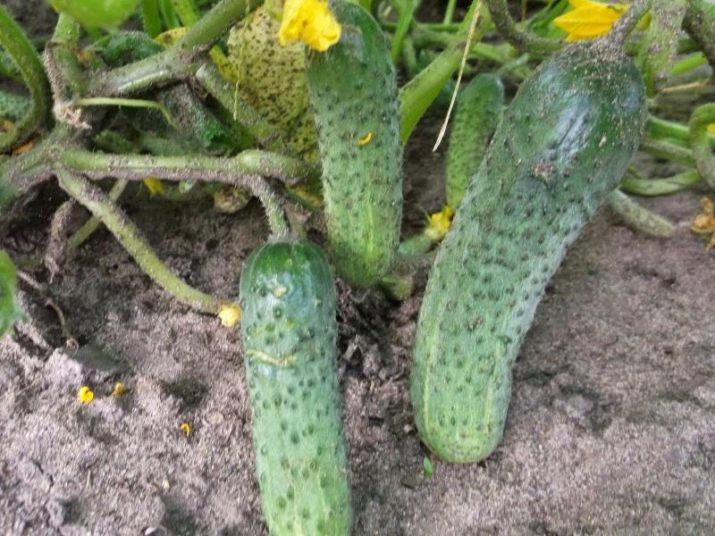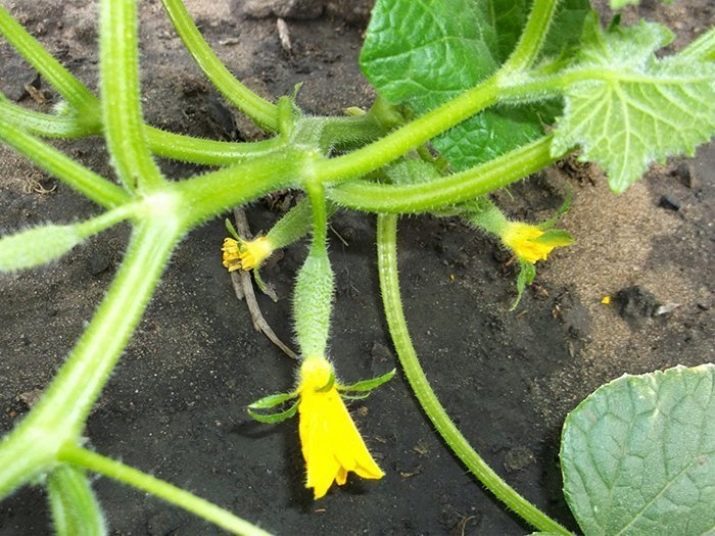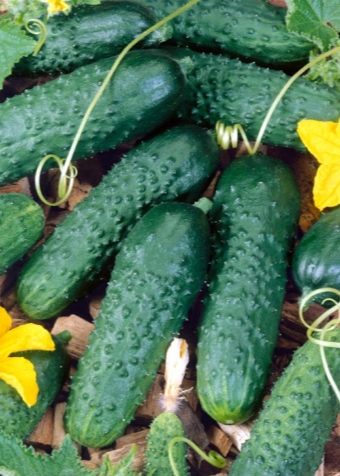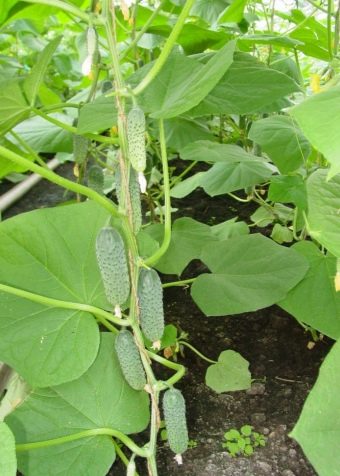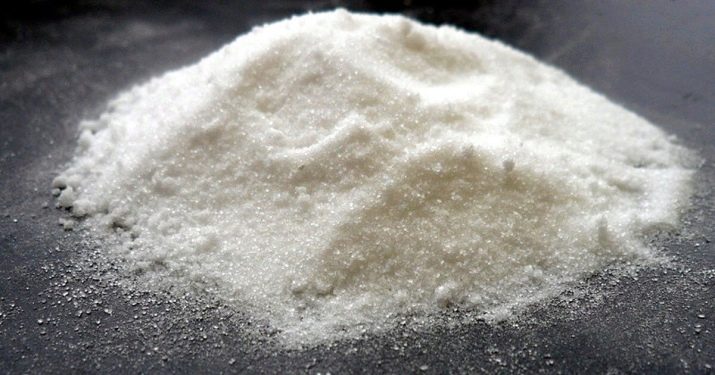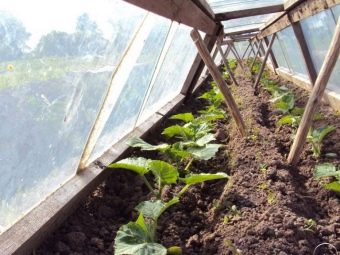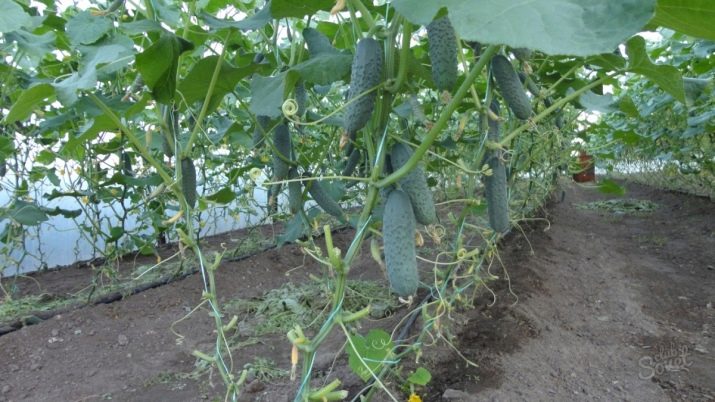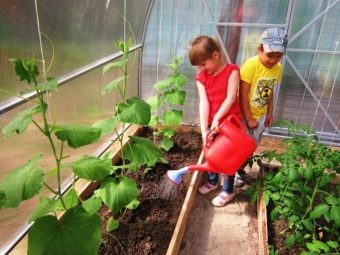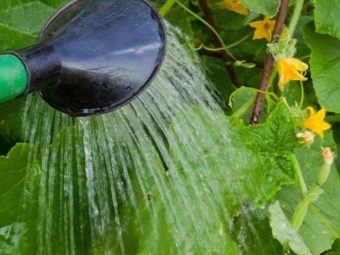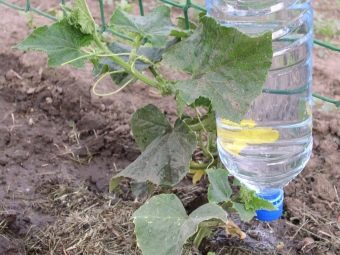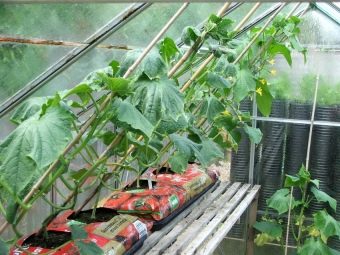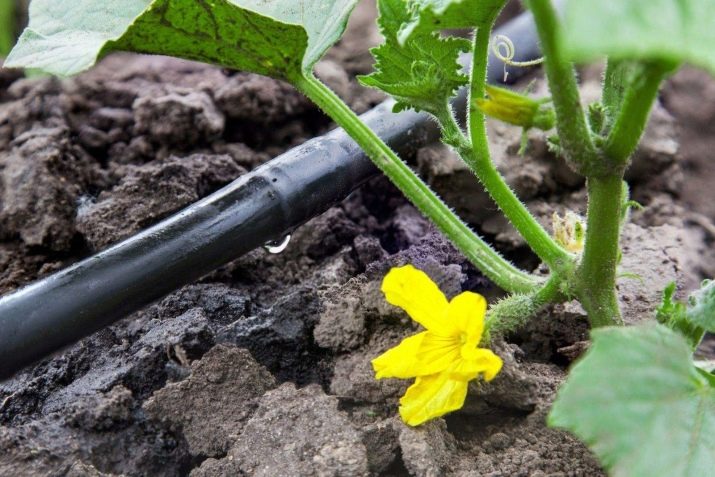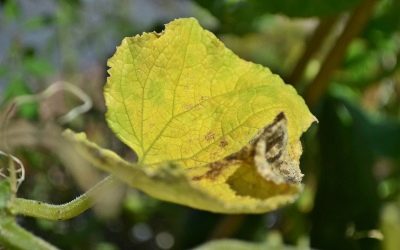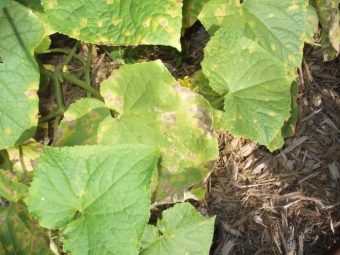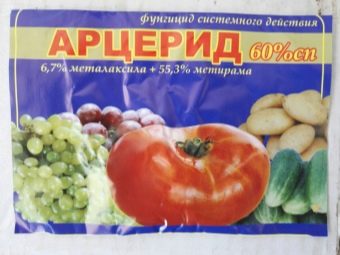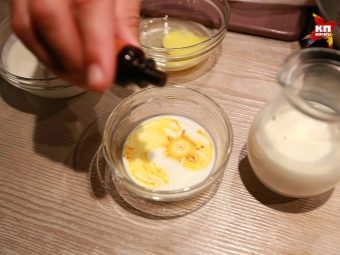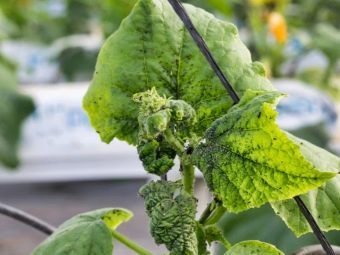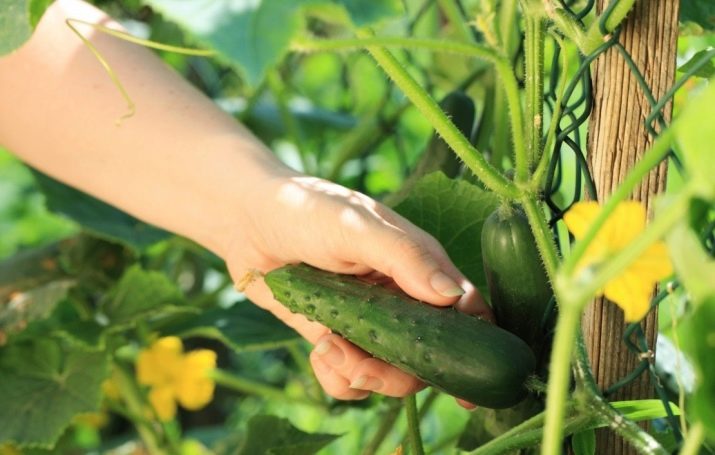Cucumbers "Herman F1": description of the variety and cultivation
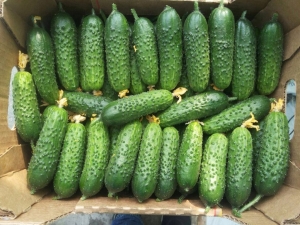
Despite the fact that the early ripe variety of cucumbers "Herman F1" appeared relatively recently, it quickly gained popularity among gardeners.Such success is due not only to great taste, but also good germination, productivity.
Special features
Cucumber "Herman F1" is an early hybrid, fruit ripening occurs at 35-30 days after the first shoots. Its appearance is obliged to the Dutch breeders of the company Monsanto.
The variety is thermophilic, suitable for cultivation in the southern regions. Growing in the middle climate zone is also possible, but it is better to do it in a greenhouse or greenhouse. In the southern regions can be grown in open ground.
The variety belongs to the hybrids of the first generation, that is, the seeds collected from the previous harvest are not suitable for re-cultivation. Every year you need to buy a new seed.
Seed germination is very high, usually reaches 100%. At the same time, sprouts appear amicably, which means that the harvest ripens simultaneously on all bushes.
The description of bushes usually includes information about rather large sprawling lashes with large rough leaves that are not located close to each other.
It is recommended to form bushes in one stem, whips are well suited for vertical cultivation - they do not break when fixed on a trellis or under the weight of fruits.
The characteristic of the variety will be incomplete if you do not indicate that “Herman F1” refers to parthenocarpic varieties of the hybrid. On the bushes are formed only female flowers that do not need pollination. One inflorescence forms up to 5-6 ovaries.
The yield of the variety is high and up to 25 kg with 1m2. When grown in a greenhouse, the yield is usually somewhat higher than when cultivating the crop in open ground. However, the latter exceeds greenhouse cucumbers in their taste.
Formed fruits can be attributed to the gherkin type, the average length of which is 8-10 cm. Feedback from gardeners allows us to establish that the fruits may have large sizes, but this negatively affects their taste.
Gherkins have an oblong shape and a diameter of 2.5-3 cm. Each one weighs about 80 g. The surface is saturated green, sometimes dark green with pronounced roughness. The flesh is crispy and juicy, it tastes sweetish. This variety belongs to the salad, and is also suitable for preservation.
Advantages and disadvantages
Appearing on the market, the variety "German F1" won the trust of first European and then Russian summer residents. This is due to a number of advantages that these cucumbers possess. Seeds usually do not require special labor-intensive preparation, but at the same time demonstrate excellent germination.
The precocity of cucumbers is also attractive to many gardeners, because it is possible to enjoy the gherkins six weeks after planting. I am also pleased with the high yield of this variety.
The fruits have an attractive appearance, remain fresh for a long time after harvest, which allows them to be grown for sale. With its good taste, this cucumber variety perfectly complements the taste of vegetable salads and cuts. When preserved, it does not change its taste, remaining dense and crispy.
Despite the immunity of the variety to certain diseases characteristic of the culture, it is still not sufficiently resistant to fungal diseases, including rust. Usually the cause of the defeat of the bushes with a fungus is a violation of the principles of agricultural engineering.
The disadvantages of the variety include the difficulty of growing seedlings. It does not tolerate picking and transplantation into the ground or greenhouse, and therefore requires a certain gardener's knowledge, skills and patience. Experienced gardeners recommend sowing a variety with a reserve, because the loss of bushes at the stage of growing seedlings is usually not avoided. Of course, this entails additional costs and increases the complexity of growing seedlings.
Like most cucumber varieties, “Herman F1” grade does not tolerate low temperatures, sharp temperature drops.
It can not be planted in cold soil.
Landing rules
Like most modern European-made hybrids, Herman F1 seeds are treated with special disinfectants and growth-stimulating compounds, and therefore do not require preliminary preparation. The manufacturer emphasizes that seed should not be soaked in water.
From the gardener is required only to prepare the soil. Cucumbers give a good harvest on light fertile soils, they are very demanding for the access of oxygen to the root system. To provide such a soil helps the introduction of manure (a bucket of 1m2) in the autumn and the subsequent deep digging of the earth.
Manure will warm the soil, enrich it with carbon dioxide, necessary for the growth of culture. Its presence in the soil will make the earth more airy, loose, which will provide air access to the roots and prevent stagnant moisture.
Additionally, you can make manure in early spring, covering it with a layer of soddy earth with a height of 20 cm.
It is not necessary to plant cucumbers annually in the same place; it is possible to return to the former place of planting after 3-4 seasons Lands are not suitable for the cucumber “Herman F1”, if pumpkin and zucchini were cultivated on them before.
A few weeks before planting seeds or seedlings, it is required to add minerals - ash, superphosphate, ammonia or potassium nitrate. It is especially important to fertilize the soil with minerals, if it is planned to plant the seeds immediately into the ground, top dressing will provide a friendly germination of greens.
Similar requirements for the quality of the soil (fertile and loose, enriched with minerals) are imposed when growing seedlings at home.
It is possible to grow cucumbers “Herman F1” by planting seeds in a ground or greenhouse or by pre-growing seedlings at home. In any case, the seed is extremely demanding on the temperature of the environment and soil. The first must warm up to + 22 ... 25C, the second - to be no lower than + 18C. If the soil temperature is below + 16C, the seeds will not grow.
It is worth noting that, if possible, gardeners are trying to abandon the cultivation of seedlings of this variety, preferring to plant the seeds immediately in the greenhouse or in the ground under the film. This is due to the poor survival rate of transplanted seedlings.
However, if the seedlings still take root well, with this method it will be possible to harvest two weeks earlier. For the cultivation of seeds for seedlings, it is better to use peat pots with a diameter of at least 25 cm and sow one grain in each.
Under the film, the seeds are usually sown at the end of May, but if the seedlings are transplanted, then this can be done after the 20th of May. When growing a crop under a film in the ground, seeds are sown around May 23-25, and seedlings after the tenth of June, when night frosts are past.
It is necessary to focus not only on calendar values, but also on climate, indicators of air temperature and soil.
Since the variety has rather powerful lashes, the seedlings are planted at a distance of at least 30-40 cm from each other, and the distance between rows should be at least 60 cm. . After the green shoots appear, they are thinned out, removing weak ones. After that, the distance between seedlings should be at least 25 cm.
When transplanting seedlings into the ground, it is important to ensure that the roots are not excessively buried, as this will not allow them to receive the necessary amount of oxygen. This, in turn, adversely affects the state of the green aerial part of the bush.
Properly plant a plant so that its roots are in the upper layers of the soil. However, it also causes compliance with certain conditions during cultivation - during watering, loosening, hilling should be careful not to damage the root system.
Care
After the third leaf appears on the bushes, it is necessary to pile it up, forming a small hill around the stem. This will protect it from moisture and further rotting.
Cucumbers - heat-loving culture and this variety is no exception. The optimum temperature for them is + 23 ... 25С, while the soil should be heated to at least +18 С. It is necessary to exclude too large differences in day and night temperatures, covering the plants for the night with a film when grown in open ground.
However, the plant does not tolerate direct sunlight - its leaves begin to curl. Prevent this will help abundant watering in the morning and evening, so that by the heat of the day the leaves were filled with water as much as possible.
Particular care should be taken to monitor the atmosphere inside the greenhouse or greenhouse, where temperatures can rise above + 35 ° C, which is dangerous for the crop. Quickly reduce the temperature allows ventilation of the greenhouse, abundant watering and spraying water in the structure.
This variety can not grow in windy areas, poorly tolerates drafts and heavy movements of air masses. To protect the culture, you can plant nearby tall plants that will take the wind upon themselves. In this case, you should make sure that they do not obscure too much cucumbers from the sun. But a small penumbra in a hot day variety does not hurt.
For irrigation, use separated water; it should not be cold, as this will cause the soil to cool. In addition, the root system does not absorb cold water, as a result of which it remains in the soil. The plant at this time does not receive moisture, as the above-ground part of the bush speaks with faded and twisted leaves. The gardener, believing that the plant lacks moisture (which is absolutely true), tops up the water, which can provoke stagnant fluids in the soil and the development of rot.
Water cucumbers recommended 2-3 times a week. If the summer was droughty, watering can be done every day or every other day. It is better to do this in the evening or morning hours.
The most advanced drip irrigation system is considered. If it is impossible to organize it, you should avoid watering in the root or along the trunk of the bush. It is more correct to pour water into special trenches near the cucumber bush. The rate of water consumption depends on the stage of the growing season and the size of the plant and can be from 0.5 to 3 liters.
The formation of the sheet, as already mentioned, is carried out in one trunk, which is tied to the trellis. An elongated shrub receives more solar heat and does not touch the ground, reducing the risk of increasing the level of humidity inside the plantings, and thus the likelihood of developing a number of diseases. As the bush grows, its stepsons and the top are twisted on a rope stretched vertically so that the plant does not spread along the ground and does not break under its own weight.
When growing this variety, it is necessary to feed them, which are made every 10-12 days. A universal solution for this purpose is an infusion based on 10 liters of water, 1 liter of mullein (the composition should have a thick consistency), 15 mg of ammonium nitrate.
During the flowering period, a similar composition is recommended to be supplemented with calcium (chloride or sulphate), as well as superphosphate, taking these components in an amount of 20 g each. This solution is suitable for fertilizing during fruiting, although in this case the concentration of the composition should be increased.
It is necessary to grow cucumbers alternating root and foliar dressings. The latter are carried out with a solution of nitrate (a tablespoon of the component in a bucket of water). When cultivating a variety in a greenhouse between additional feedings, it is necessary to increase the time, because there the ground is not eroded after rain, it lasts longer nutrients.
As a rule, the lack of a particular mineral can be found by evaluating the appearance of the leaves. They begin to turn yellow and dry, and this may be the yellowness of the tips, the "rim" on the edge of the sheet or spots. In each case, we are talking about a deficiency of a certain mineral.
Diseases and pests
Sort "Herman F1" is resistant to many diseases, but improper care can cause rust and blotch. As a rule, the main cause of such troubles is the difference between temperatures, provoked including irrigation with cold water.
To determine that the plant is infected, allow the appeared brown, or rather, rusty spots on the foliage. They can also affect the neck of the seedlings, so the affected bush should be isolated and sprinkled with earth with ash to form new roots.
For the treatment of a diseased bush, a solution of Arcerid is used, the ground around it is a solution of copper sulfate. The rest of the bushes as a preventive measure spray Bordeaux liquid. It can be used as a prophylactic agent that can be used throughout the growing season.
As a preventive measure before flowering, foliar dressings with milk-iodine whey can be arranged for bushes. To do this, a bucket of water is taken 1 liter of milk, 30 drops of iodine. There is rubbed a piece of soap. All components must be thoroughly mixed and dissolved.
Plants can be affected by a melon gourd or spider mite. It is usually possible to notice the first one too late when she breeds. On the appearance of the tick on the bushes indicate small cobwebs, which suddenly begin to show up on the bushes. Insects settle on the inside of the leaf, pulling juices out of the plant, which leads to its fading.
Aphid and spider can not stand the smell of marigolds and garlic, so these plants can be planted next to the cucumber ridge. Onion peel infusion is widely used as a popular pest control agent.
If the damage is significant, special substances of biological or chemical origin should be used.
Harvesting and storage
On the maturity of the crop says yellow leaves of the bush. Technical maturity occurs at 40-42 days after germination.
Harvesting should be every 2-3 days, it will save from the appearance on the garden tasteless and bitter cucumbers "overgrown". In addition, the more often the fruit is harvested, the faster a new crop batch is formed on the bush.
Peeled cucumbers can be stored in the refrigerator for up to 2 weeks. Before removing them for storage, do not wash the fruit. In the process of washing the protective cover will be removed, preventing the plucked vegetable from drying out.
Tearing cucumbers from the bush should be, gently holding it by the stalk. If you pull the fruit, there is a chance to damage the roots of the plant.
Do not step on parts of the bush during assembly. By the way, tying it to the trellis greatly simplifies the care of the crop and the harvest.
After a bountiful harvest, by mid-August, the plant begins to show less vegetative activity. However, even with such bushes you can still get a good harvest. To do this, they are satisfied with iodine and milk extra-root feeding, simultaneously stimulating the growth of new roots by hilling. During this period, it is necessary to cut off all the yellowed and dried leaves, so that they do not take away the vital juice of the bush and give the opportunity to develop green leaves.
To form the second crop flow allows for pinching of the stepsons, however, not all shoots need to be removed. The fact is that new fruits will be formed exactly on stepchildren formed in the leaf axils. Two or three processes should be left for this, the rest, like the mustache, should be removed so that the plant does not spend its strength on their buildup.
You will learn more about cucumber varieties "Herman F1" in the following video.

